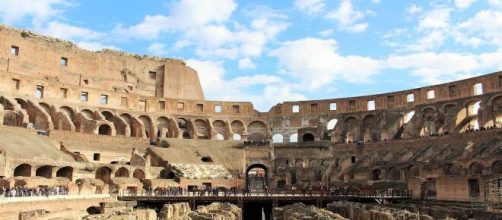Italy has allowed the floor of the ancient Colosseum in Rome to be restored so that tourists can stand where gladiators once fought. It was reported by The New York Times. Italian Minister of Culture Dario Franceschini unveiled a project to build a retractable wooden floor. He said that restoring the base would allow visitors to see the grandeur of the Colosseum from a new perspective and return to the arena's original image.
The project will engage engineering company Milan Ingegneria, which won the tender announced by the Italian government. As the BBC reports, the work cost will be 18.5 million euros ($22.2 million).
The Minister of Culture is also confident that the newfound floor will allow the Colosseum to become a venue for large-scale cultural events. The following plans are to host the G20 cultural summit in July of this year. It is planned that the floor in the Colosseum will appear in 2023.
The uniqueness of the Colosseum
The Colosseum was the largest arena in the Roman Empire. Built during Rome's massive reconstruction, the Colosseum, for four centuries, was the most prestigious place to entertain the inhabitants of the capital and the empire. The colossal arena in which captive gladiatorial fights, soldiers, and slaves showed their martial prowess in front of at least 50,000 people eventually became the hallmark of Rome.
The Colosseum now lacks the floor that was originally in the structure. Archeologists destroyed it in the 19th century. They then discovered the underground tunnels of the arena under this architectural monument, where gladiators and animals were kept before entering the hall. Today, the arena remains one of Italy's most famous landmarks. About 7.6 million people visited the monument in 2019, the year before the pandemic began.
Renovation project
The new floor area of 3,000 square meters will be made of a super durable water-repellent modified wood - Akoya. It will consist of hundreds of rotating wooden slats, which will provide natural light and air circulation in the underground chambers. Authorities assure that the construction will not damage the historic buildings: the project involves creating a fully removable floor construction.
If necessary, it can be entirely removed without damaging the structure if developing its new design.
An interesting detail of the project: the rainwater will be collected on the floor and will be used to supply the toilets of Rome's most visited monument.
The Colosseum's executive archaeologist, Alfonsina Russo, said that construction of the Colosseum arena should begin by the end of 2021 or early 2022. Once the reconstruction is complete, the new floor will allow visitors to the Colosseum to "see its grandeur" from the very center of the arena.


